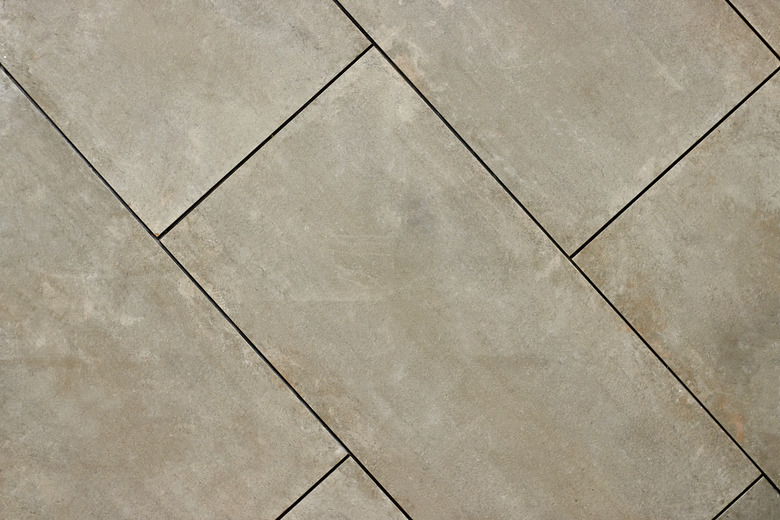Polished Vs. Unpolished Porcelain Tile
Porcelain tiles are made of pressed clay fired to high temperatures to render them hard, dense and extremely durable. They work in all areas of the home and come in a wide variety of styles, including those that mimic natural stone. Porcelain is available in multiple finishes, including polished, matte and textured. These finishes can have slightly different installation and care recommendations that may influence your decision to use them.
Textured Porcelain Tiles
Textured Porcelain Tiles
Textured porcelain tiles are also occasionally known as stone look tiles. They can have a slightly rough surface or an extremely rough and high-relief surface, depending on the style of stone they are mimicking. This texture is achieved during the mold process of the tile. Porcelain is made of compressed clay dust that has pigments added to it for color that goes right through the tiles. Stone look or textured porcelain tiles are given their finish before firing, so the surface of the tiles remains just as dense, water-resistant and stain-proof as the rest of the body of the tile.
Matte Finish Tiles
Matte Finish Tiles
Porcelain can be given a smooth, honed or matte finish as well. This is done either at the time of manufacturing in the mold or after firing by grinding down the surface of the tile to a smooth finish. Matte finish tiles that are not ground down are identical to textured porcelain tiles in water resistance and stain resistance. They differ only in style, look and feel. Matte finish tiles that are ground down after firing may contain microscopic pin holes or pores only in the surface. These pores make the tile likely to collect surface dirt and require deeper cleaning. To prevent this, apply an impregnating sealer to the tiles prior to grouting and on a yearly basis.
Polished Finish Porcelain Tiles
Polished Finish Porcelain Tiles
Porcelain tiles can be ground down to a high polish in the same way marble or granite tiles are. The difference is that the grinding process can create microscopic pores in the surface of the tile, which the high polish masks from view. These tiny pores make the tile likely to hold on to grout and to collect surface dirt. The tiles are still water- and stain-resistant, so you can use polished porcelain tile for shower walls and other areas that get wet. The holes affect only the surface, but they can appear to get dirtier and to require more maintenance to stay clean. Seal polished porcelain tiles the same way you would marble, prior to grouting and whenever water stops beading off their surface, to help keep them clean.
Style and Use Differences
Style and Use Differences
Textured porcelain tiles make excellent floor tiles for areas where a textured stone-like slate would ordinarily be used. While they may have high surface texture, the indents between the bumps are large and shallow, and the tiles remain easy to clean because dirt is easily washed from them. The texture also provides a nonslip surface.
Matte porcelain tiles work well in all areas of the home and can provide a more subtle look. Use them in place of limestone or other soft, honed stone tiles for style. Polished porcelain tiles have a bright shine and an elegant finish. They work well in as polished floor tiles in entryways or on shower walls where marble would stain. While they may appear to be slippery because of their finish, the impregnating sealer applied will increase the slip resistance, and proper maintenance of the tiles will decrease the likelihood of a problem.
Both polished and unpolished porcelain tiles offer a durable option for floors and walls. Comparing the subtle differences in the two can help you make your final decision.
